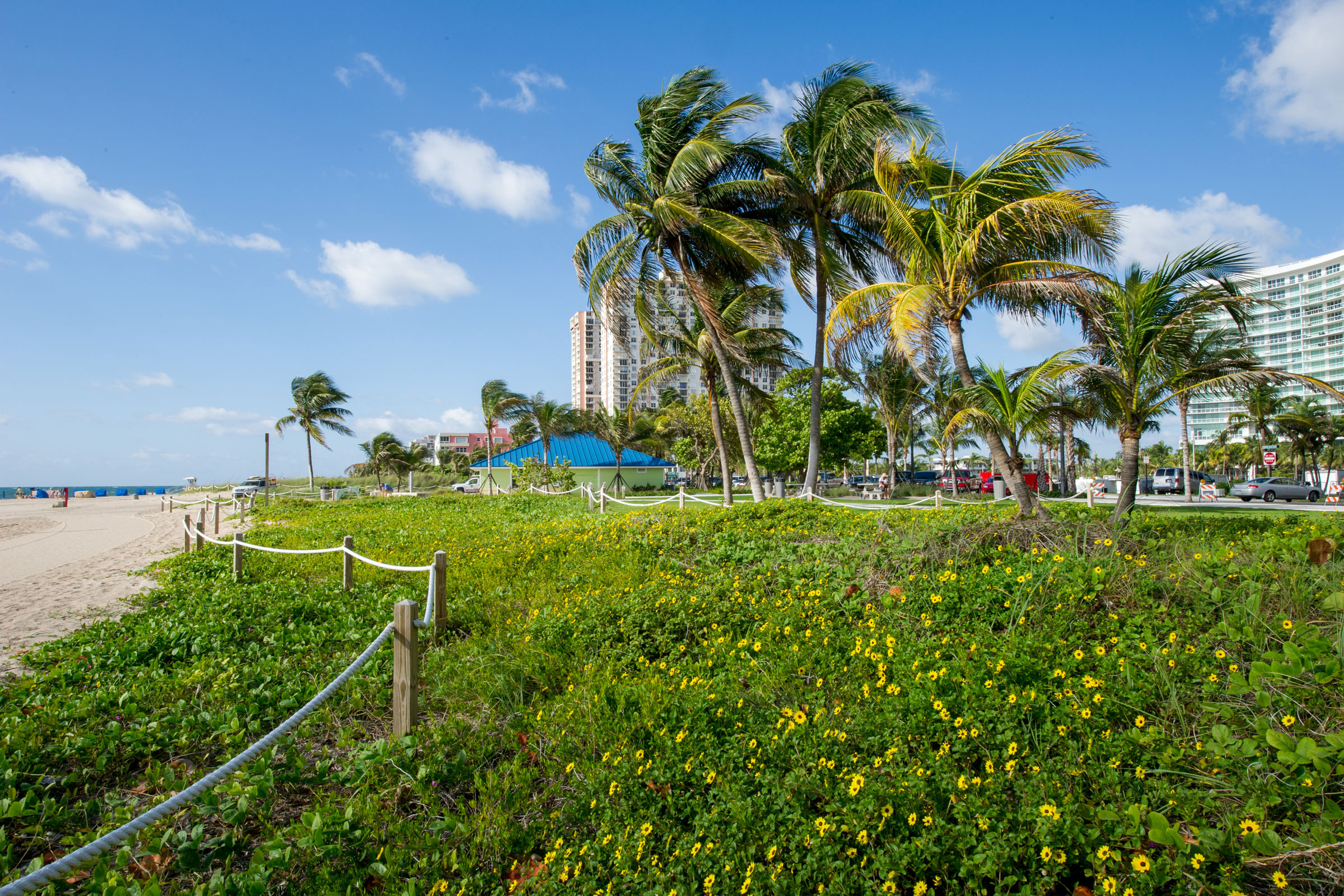Story at a glance:
- Nearly 60% of the world’s population currently lives and works within 60 miles of a coastline.
- Water management should be a major part of every urban renewal and revitalization effort.
- EDSA develops nature-based, resilient solutions to protect the environment while enhancing communities.
Few elements are as essential to life as water. As a commodity in natural and built settings, the amenity can be relied upon to provide a diverse array of climatic, aesthetic, economic, and recreational opportunities. But it is how water is handled, treated, and controlled that influences how it will either benefit or harm real estate development.
As sea levels rise and weather becomes more extreme due to climate change, where water goes, what it meets, and how it recedes are important considerations for mega metropolises and second-tier cities. And although coastal communities have experienced what climate change can throw at them, there is unfortunately more to come. For instance, at the annual meeting of the American Geophysical Union back in December, scientists revealed the discovery of weaknesses in the eastern ice shelf of Antarctica’s Thwaites Glacier, which could soon shatter the Florida-sized monster into hundreds of icebergs, raising sea levels several feet and endangering millions of people in coastal areas. There is no question—emphasizing and incorporating climate positive design is a necessity.
Going Natural, Naturally
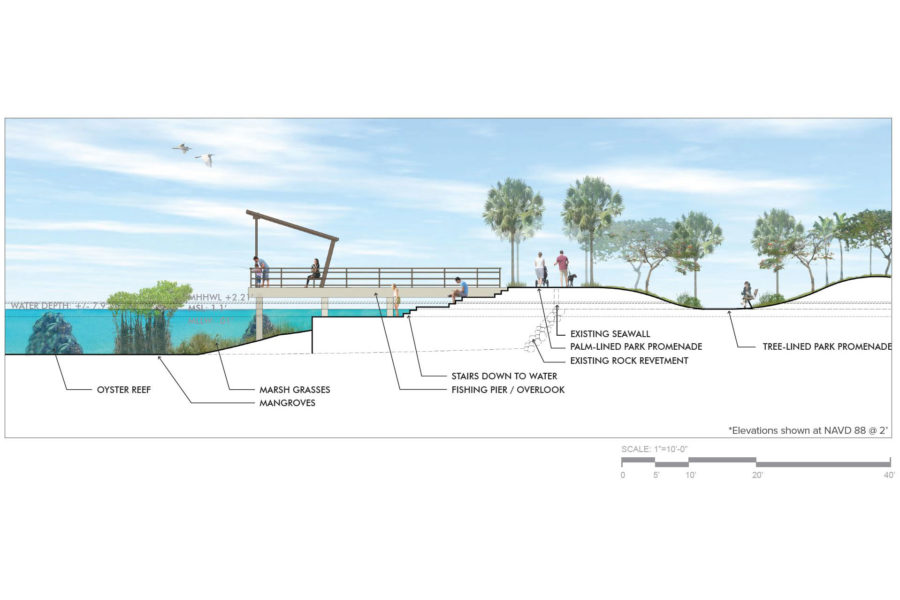
Brickell Back Bay. Drawing courtesy of EDSA
While coastal settings have traditionally relied upon raising higher barriers to keep water out, a more holistic approach now embraced by planners, urban designers, engineers, and landscape architects is to work with existing environmental features. By emulating a natural flow approach and incorporating strategies, technologies, and designs that work in unison for improved climate resiliency, water in its purest form can provide attractions for people and anchors for development.
As stewards of the land, landscape architects have long pushed for the incorporation of climate positive design strategies in project development. These professionals are now taking on the challenge of redesigning communities in the context of their bioregional landscapes, enabling them to adapt and mitigate the root causes of climate change. As such, EDSA has always embraced an innate approach to its projects—including designing with natural drainage corridors, utilizing solar and thermal energy, and developing creative solutions for stormwater management to protect cities and properties near the coastline.
For example, EDSA recently joined South Florida developers to find an alternative solution to that of the Army Corps of Engineers, who sought out to build a 10-foot concrete floodwall around Key Biscayne Back Bay, a marine sanctuary located south and east of downtown Miami. Conceived to mitigate storm damage, the Army Corps’ proposed wall was not only unappealing, but it would block water views, lower land values, impact the wildlife sanctuary, and increase the violent intensity of waves and storms.
Teaming with global infrastructure advisor Moffatt & Nichol, EDSA instead developed a nature-based solution to protect the Back Bay while enhancing the community’s coastal environment and culture. Employing ecologically sensitive, sustainable shoreline strategies, three overall section concepts—consisting of a park, promenade, and urban edge—defined a series of resilient solutions that responded to Miami’s existing infrastructure.
Each theory utilized oyster reefs, mangroves, marsh grasses, and wetlands to create natural barriers for sea-level rise protection, while greenways and bioswales were put into place to accept street runoff and act as flood protection during storm events. The landscape architect and engineer not only designed the process to help against climate change now, but ensured the area was covered over the next 50 years, as the heights of all protective elements would increase naturally over time.
Water, Water—Just Not Everywhere
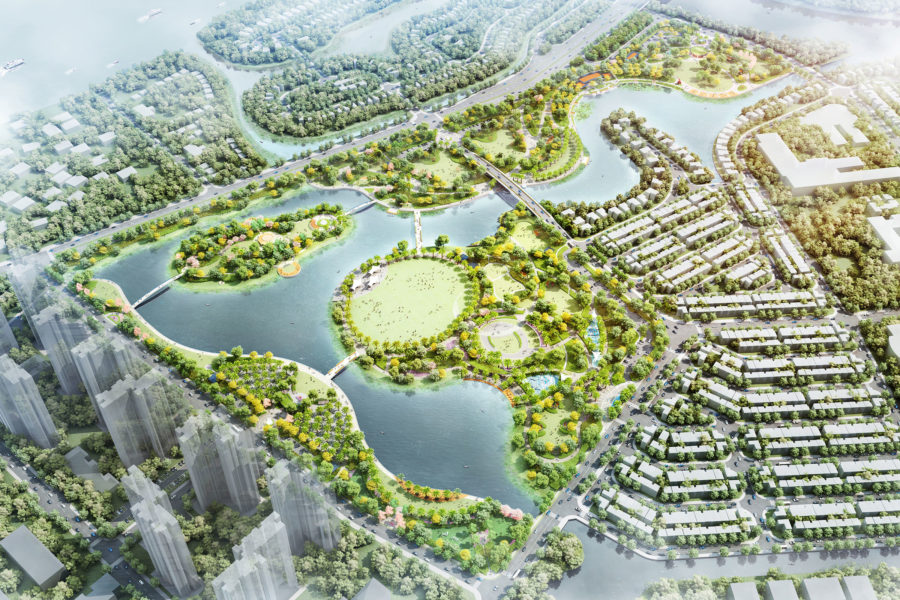
La Seine. Image courtesy of EDSA
Climate change aside, water management is a major part of every urban renewal and revitalization effort, bearing upon the well-being of those who live, work, and play within a particular region. Among prime considerations for EDSA’s urban planners is the management of stormwater in cities, with designs conceived to incorporate elements such as bio-retention, vegetated swales, and rain-garden systems to ease drainage, erosion, and the potentially dangerous risks of flooding from run-off and rising seas.
Implemented effectively, such features are not only protective but also add value as amenities. In fact, stormwater collection systems that create flowing, falling, splashing, standing, and sheeting water can play a vital role in raising awareness of the environment and growing risks of climate change while drawing people to experience and discover the importance in protecting the coasts. This is especially true when systems are arrayed along well-placed viewpoints such as overlooks, seat walls, and walking or biking paths that balance the perception of safety with activity and even adventure.
A recent design project undertaken by EDSA at La Seine, a waterfront park in Ho Chi Minh City, Vietnam, illustrates this. Surrounded by a dense urban fabric of residential, commercial, and hospitality features, the 89-acre site is comprised of four separate stretches of land along a human-contrived lake that flows into the Taec River.
Water, the very feature that fragments the site, turned out to be key to EDSA’s protective design with an inspiring hydrology-based framework and sustainability strategy that artfully celebrates the element in all its forms. EDSA successfully developed a green oasis in the “backyard” of residents while promoting awareness of responsible stormwater management and natural hydrology—which was essential given Ho Chi Minh City’s tropical climate and drenching rainy season.
In addition, EDSA’s plan blended art and science, celebrating sustainable stormwater management through water-inspired design forms and unique water collection and conveyance features. These included sweeping curves, ripples, and water-drop shapes to define flexible green spaces, play areas, and plazas to respond to the curvilinear edges of the lake and leverage concave and convex waterfronts. Innovative walls, pavilions, and other built features were further employed to harvest rainwater and highlight the movement of storm water through the site.
Combined with nature-based stormwater management solutions such as bioretention, floating wetlands, and living shorelines, the landmasses of La Seine now function as part of an overall system to boost the water quality of the lake and the Taec River. The park approaches sustainability as a system while enabling visitors to observe and engage in the process hands-on, instilling an appreciation for the environment and its natural resources.
Subtler Strategies Breed Success
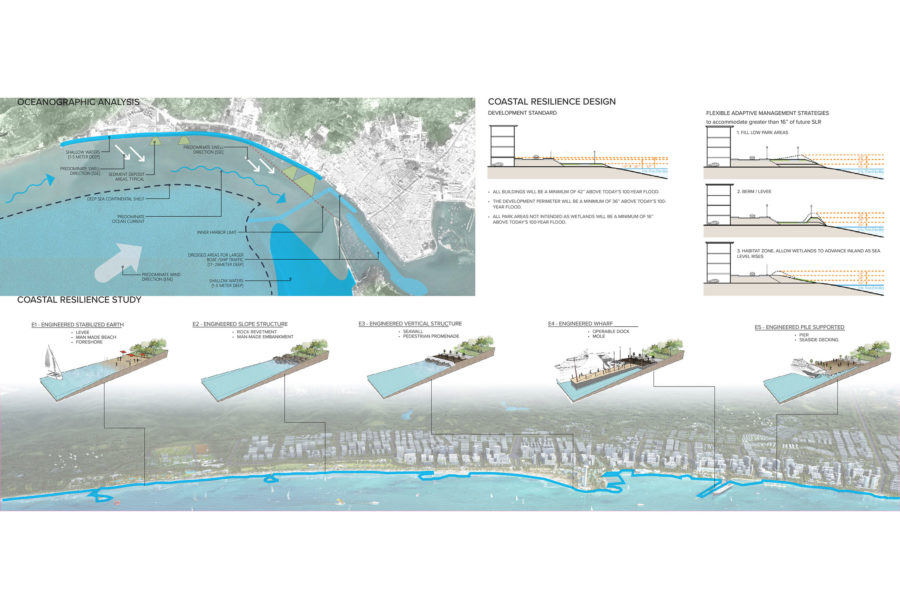
Shanwei waterfront. Drawing courtesy of EDSA
With nearly 60% of the world’s population currently living and working within 60 miles of a coastline—and the appeal of such locations continuing to grow—the significance of environmentally responsible development in the face of rising seawater is paramount. While the devastation that Hurricane Sandy wreaked upon the eastern seaboard in 2012 revealed the long-term consequences of coastal development in the US, the major engineering feats considered in response—levees, locks, and more—were overkill.
EDSA designers prefer to employ subtler strategies, tapping into an array of approaches to ensure the successful and usage of new and existing waterfronts and coastal recreation areas. These include addressing infrastructure and vulnerabilities, retrofitting existing communities, and managing retreat from the water’s edge. Climate positive design choices protect natural resources and create sustainable conditions to ensure projects are economically viable and enhance quality of life—all complying with or even exceeding existing regulations.
Better, that is, to tread lightly, use nature’s own system for protection and advantage, and refrain from disturbing natural processes found along coasts like dune systems, drainage, and the movement of sediments. Keeping a beach of a coastal area in a natural state enhances its social, environmental, and cultural importance, creating better public spaces and accessibility while raising not just its value and that of the land around it, but also the opportunity to educate the public to the importance of such areas.
Everything is Related
Every parcel of land is unique, a singular manifestation of the physical, biological, and cultural forces that act upon it, so it has always been important for EDSA’s master planners and landscape architects to really study each parcel and get to know a place before acting upon it.
What they invariably find is everything in nature is related to everything else. For instance, destroying a coastal dune to make way for development will not only impact the environment by making it more vulnerable to storm surges, erosion, and rising sea levels, but also compromise natural features like water balance, habitat, coral reefs, and other resources for animals and plants that people are drawn to enjoy.
For instance, EDSA created a master plan for Peninsula Maya, a 4,000-hectare land parcel located within Holbox Island at the northern tip of the Yucatan Peninsula. The focus of the project was geared toward protecting the environment and respecting local culture—priorities that recent market studies have shown are much on the minds of consumers.
The plan laid out a hotel and residences in a horizontal form, referencing beach dunes with open pathways and combining hard infrastructure and soft green public spaces to mitigate chronic flooding. Waterways meandering through mangroves created a transportation network; boardwalks and nature trails offered opportunities for people to experience the island’s natural beauty and sense of place; and habitats for animals, recreation, and education helped make the resilience at the heart of the project less obtrusive, increasing value for residents.
Climate Change Action Makes Economic Sense
In the end it just makes good economic sense for coastal cities and developers to be on the ball about climate change.
In the Caribbean alone the cost of damage from sea-level rise to resorts, airports, local tourism, and more has been estimated to exceed $20 billion annually. By contrast, proactive adaptation to our constantly changing planet will be far less expensive, with $1 in adaptation capable of preventing $4 in economic losses. Hence, there is a need to create coastal environments that can withstand higher seas and stronger storm surges.
The good news is, with the dangers of climate change becoming more obvious, green infrastructure solutions are now being more widely adopted. In South Florida, climate-induced challenges were not considered a priority in the past. Now, with sea-level rise accepted as fact, new codes are in place to address lifting equipment above storm-event flood levels, and hoteliers in the region are embracing green infrastructure solutions to mitigate storm surge, primarily by enhancing existing or creating primary coastal dune systems.
Case Studies
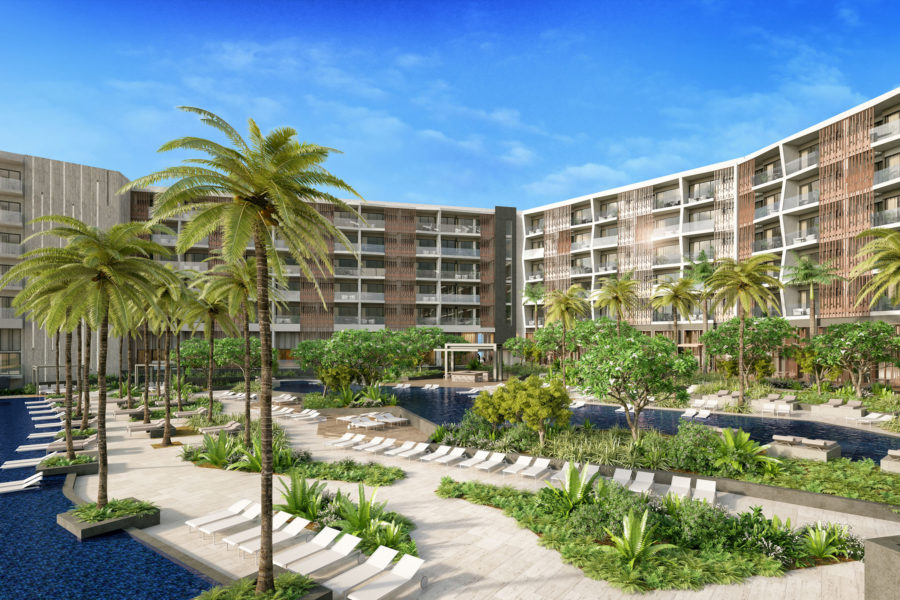
Amankaya Waldorf Astoria. Photo courtesy of EDSA
EDSA’s work on Pompano Beach Boulevard in Pompano Beach, Florida provides a good example. With the roadway running three-quarters of a mile along the Atlantic Ocean, the project focused on the reestablishment of a deteriorated dune system through native plantings, protective barriers, and controlled beach access. Working with the Pompano Beach Community Redevelopment Agency, EDSA’s landscape architects and urban planners created a plan that included an extensive beach promenade, a multi-purpose kiosk building, and state-of-the-art playground, as well as various roadway and parking improvements. With its collaborative approach, the design bolstered public support and succeeded in garnering funding for implementation. Today Pompano Beach continues to garner acclaim for its promenade, public plaza, and protective restored dunes.
Another project along the waterfront in Cancun saw EDSA adapting the local topography for a luxury hotel embedded between protective beach dunes and an existing mangrove forest. Rather than raise barriers at the 413-acre site of Waldorf Astoria Amankaya Resort, designers celebrated the richness of the Yucatan jungle by employing shapes and materials that matched the intrinsic qualities of regional colors, textures, and forms. Walkways surrounded by water and vegetation were carefully tailored to the site in support of preservation strategies that allow natural wildlife to thrive and offer guests and visitors a positive understanding of the local ecosystem.
Meanwhile, though still in the concept stage, EDSA’s plan for reimagining of the blighted waterfront of Shanwei in Guangdong Province of China was honored with an Award of Merit from the American Society of Landscape Architects. Among a myriad of features conceived to support the city’s goal of building the world’s longest stretch of coastal parkway, EDSA’s concept included resilient, adaptive green infrastructure to protect the beach environment and reduce the impact of future storm and flood events with impactful design solutions capable of adapting to sea-level rise, erosion, and coastal safety needs.
A cyclical filtration system was designed to protect the lowlands by managing water runoff to the beachfront from neighboring mountainous uplands via stretches of green infrastructure that would move currents from rivers and streams downhill to lakes, reservoirs and ponds while cleansing and purifying each body of water in its path. Existing dunes systems were also integrated into the plan, re-nourishing and armoring the beachfront to control erosion and sediment deposits. In addition, a delta filtration system was designed to create a beautiful wetland park, with ecologically beneficial native vegetation to prevent further siltation, cleanse upland runoff, and replenish and expand the public beach and natural dunes.
Going Green for the Future
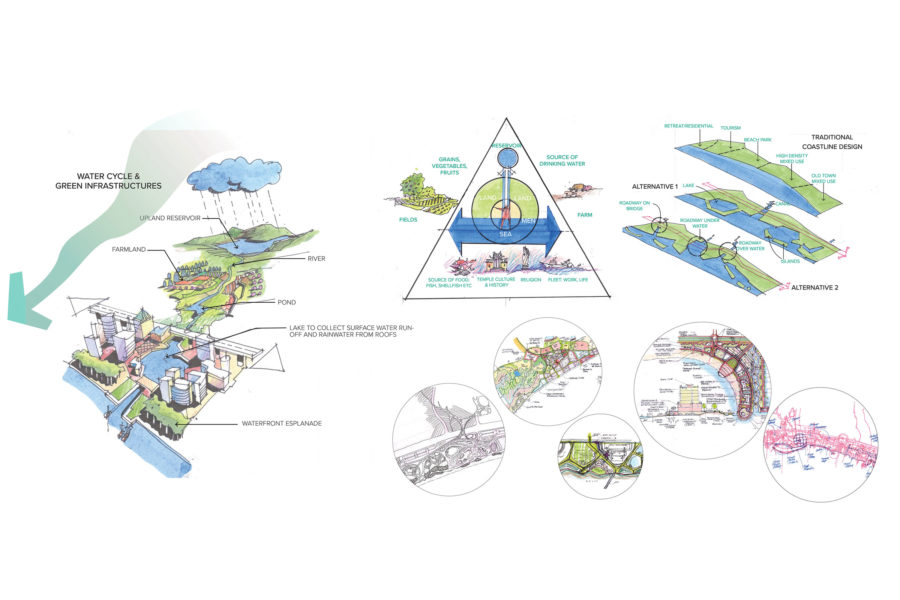
Shanwei waterfront. Drawing courtesy of EDSA
While the present may seem a bit challenging, steps that EDSA and other planning, landscape architecture, and urban design firms are taking to protect coastal settings from the hazards of climate change and promote climate positive design point to a brighter future. Our firm has noticed optimistic signs in Latin America, where developers of new hotels and resorts have learned from the mistakes of overbuilding here in the US and are focused on preserving natural wildlife, forests, and seashores. No matter what project we work on, we want to make sure the environmentally appropriate, resiliency sensitive, curated experiences we create can be an example for the rest of the world. That’s what people are looking for.

